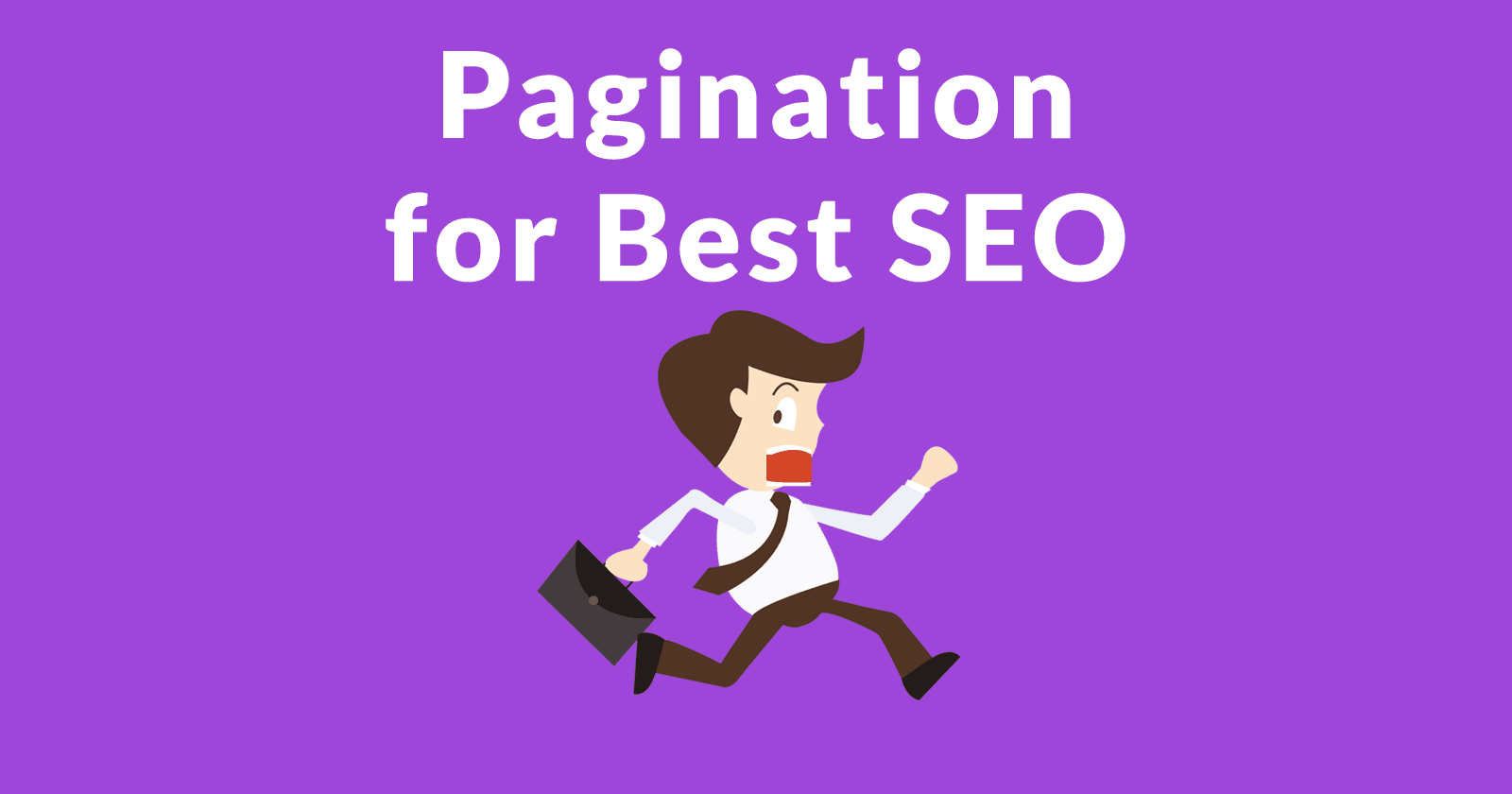|
John Mueller's Greatest SEO Success Story Was... https://ift.tt/2NyEMHX A Reddit thread is asking folks to share their greatest SEO success story and there are some good ones. But Google's John Mueller chimed in and said his was as simple as instructing someone to remove the noindex from their site. He said "sometimes good things come in small checkboxes." SEO via Search Engine Roundtable https://ift.tt/1sYxUD0 February 28, 2019 at 07:08AM
1 Comment
Multiple Google User Interface Tests Including People Also Ask Icons https://ift.tt/2GQM4GA Over the past several days I have been inundated with reports from SEOs about Google testing different interfaces. I'd say 80% of them are interfaces we've reported on before but here are some new ones I haven't seen before including an icon for the people also ask section in Google Search. SEO via Search Engine Roundtable https://ift.tt/1sYxUD0 February 28, 2019 at 06:51AM Google My Business Launches New Spam Report Form https://ift.tt/2UaYDPP Google announced they have launched a new form to submit spam reports about Google local, maps and Google My Business related spam. Google calls it the Business Redressal Complaint Form and is for fraudulent activity. SEO via Search Engine Roundtable https://ift.tt/1sYxUD0 February 28, 2019 at 06:35AM Martin Splitt From Google To Host Video Series On JavaScript & SEO https://ift.tt/2H33vD7 Google's Martin Splitt announced on Twitter that Google is starting a new video series around JavaScript and SEO. He said "they are coming out now, you definitely want to stay tuned." You can watch them on the the Google Webmaster YouTube channel. SEO via Search Engine Roundtable https://ift.tt/1sYxUD0 February 28, 2019 at 06:28AM
https://ift.tt/2ECIE7P
John Mueller Gives a Lesson on Competitor Research by @martinibuster https://ift.tt/2T6gqeH  There was a discussion Twitter about competitor research and duplicating the SEO strategy. The person researched their competitor and found obvious examples of spammy tactics that obviously were helping. John Mueller entered the discussion and gave an answer that gave a profound insight into competitor research. Here is the original question on Twitter
To which John Mueller responded:
Red Herrings in SEOA red herring is a literary trick that writers use to mislead readers with a clue that seems to point to the most obvious answer. Writers use red herrings to purposely surprise their readers when the most guilty suspect turns out to be innocent and the most innocent party turns out to be the true guilty party. When diagnosing why a site is not ranking or why a site is ranking well, it’s easy to seize upon the most obvious clue and stop analyzing. Many years ago someone I knew reached out to me and said he was under a negative SEO attack that was causing his rankings to drop. I looked at his backlinks and they contained the most heinous anchor text one could imagine. I took his word for it, as he was a competent SEO. I thought this was an interesting case so I forwarded it to someone at Google. The Googler responded a couple days later and said it wasn’t negative SEO, it was a Panda issue. That was a lesson in SEO for me. It taught me to continue researching after finding the most obvious reason. Sometimes the most obvious reason for a rankings drop is not the reason. Another example is someone who came to be about a Medic Update ranking issue. They felt that they didn’t have enough Expertise, Authority and Trustworthiness (E-A-T) signals. I did a thorough review and discovered there was nothing “wrong” with the site. It just wasn’t relevant. I prescribed some changes to make their pages more relevant and the site soon started moving up the SERPs. The point is, when doing competitor research, be wary about copying some of their tactics, as those tactics may not be what’s powering their rankings. Read the Twitter discussion here. Subscribe to SEJGet our daily newsletter from SEJ's Founder Loren Baker about the latest news in the industry! SEO via Search Engine Journal https://ift.tt/1QNKwvh February 28, 2019 at 05:06AM
https://ift.tt/2Vpry2X
Google Shares Guidance on Pagination for SEO by @martinibuster https://ift.tt/2Ehyubr  Google’s John Mueller commented recently on Reddit about pagination. Pagination isn’t something you think about until you need to think about it. So getting a refresher on the proper use of pagination versus a canonical is useful, especially if you enjoy the nerdier side of technical SEO. When to Use PaginationThe original question was about canonicals and Angular JavaScript. The question started off with a bias on the part of the original poster of the discussion. The bias was that the issue was about canonicals. Here is the question:
The problem with that question is that the OP is using the wrong tool for solving a problem it wasn’t designed to solve. John Mueller answered:
John Mueller then warned about using rel=canonical to try to force Google to stick to the first page of a series. That’s actually the wrong way to do it. Here’s how John Mueller explained it:
Rel=canonical is just a suggestion, it’s not a directive that Google is forced to follow. So when Google sees that page two is different from page one, Google will ignore the rel=canonical. John Mueller then said that normal indexing should typically be able to handle a few groups of paginated content that may exist on a website:
This is interesting because it seems to suggest that the rel=prev/next is more useful for Google in situations where there’s a lot of paginated content. This is typically the case in active forum discussions, where a great many discussions could go on for many pages. Here is Google’s official Developers Page guidance on rel=prev/next advises:
The key takeaways about rel next/previous is:
Do Not Use Rel=Prev/Next for an Article SeriesGoogle’s official guidance warns against using rel=prev/next for a series of articles. For example, if you create a group of articles related to how to groom a dog and you create separate articles for cutting their nails, brushing and so on. Each of those articles, although they are a part of a series, should not be joined together using pagination. According to Google, Rel=Prev/Next is meant for use on a single article (or document), not for a series of articles. Here’s what Google’s developer’s page states:
That’s good information about pagination. SEO has so many technical details and this is one of them. It’s good to have a periodic check up because some of them, like pagination, come in handy. Read the entire Reddit discussion here. More ResourcesImages by Shutterstock, Modified by Author Subscribe to SEJGet our daily newsletter from SEJ's Founder Loren Baker about the latest news in the industry! SEO via Search Engine Journal https://ift.tt/1QNKwvh February 28, 2019 at 05:06AM
https://ift.tt/2EAYT5h
Google Blames Publishers for Bad Ad Experiences? by @martinibuster https://ift.tt/2T6vV68  Google published an article in their “Think with Google” blog that wagged their finger at bad user experiences related to ads. The article touted how it’s ad program adheres to the “Better Ads Standards.” The implication is that any ads that are bad do not originate from Google’s network. Yet the article does not once address privacy, a form of intrusion that’s a legal focus in Europe and the USA. If Google is a part of the Coalition for Better Ads and adheres to the suggestions that Google helped create, then it follows that the criticisms in Google’s articles are aimed at rival ad networks and the publishers themselves. What Publishers Need to KnowThe article is titled, “What publishers need to know now about creating a better ad experience.” The article then lists intrusive ad experiences as reasons why users might object to ads. Strangely, there is no mention about privacy. The reason why I say that is strange is because Europe passed the GDPR privacy rules in 2018 and California passed the Consumer Privacy Act of 2018 that takes effect in January 2020. Both laws affect the kind of data that is collected by advertising brokers such as Google and Facebook. Targeted advertising is the most lucrative form of advertising. They can target you by gender, geography and even sites that you have visited. Privacy may be the most important aspect of Internet advertising today by consumers. If is so important that Europe and California passed laws severely reining in the kind of data companies like Google and Facebook can collect. Considering that Internet privacy is so important, it is odd that Google published an article about the things that publishers do to annoy site visitors. It’s almost like Google and the advertising industry itself that came up with the Better Ads Standards is trying to encourage sites to walk away from intrusive advertising models while perpetuating the lucrative surveillance advertising model. Google’s blog post states:
Annoyance has been an issue to users and may be why they have employed ad blockers. Google is a part of the Better Ads Coalition and conforms with their rules. Thus, violations of the advertising standards are solely by publishers and competitor advertising networks. This article is aimed outside of Google and finger points directly at publishers. The strange thing about this article is that legislators from Europe to the USA are focused on Internet privacy. The legal focus is not on the inconvenience of popups and poor user experience but in the “creepy ads’ that follow users from site to site. It is a glaring omission of this blog post to focus on “intrusive ads” instead of privacy issues. Surveillance advertising is a lucrative area of Internet advertising. Yet, this article does not discuss it. The laws passed in Europe and California deal with surveillance advertising. So what is the point in discussing “intrusive” advertising in the form of pop ups and interstitials? If the legal trends are considered, intrusiveness in the mind of consumers may increasingly be about surveillance advertising. So why does Google’s blog post point the finger at publishers for intrusiveness when it’s Google not the publishers that is tracking users from site to site? Read Google’s official blog post here More ResourcesSubscribe to SEJGet our daily newsletter from SEJ's Founder Loren Baker about the latest news in the industry! SEO via Search Engine Journal https://ift.tt/1QNKwvh February 28, 2019 at 05:06AM
https://ift.tt/2IG2B1N
PPC Campaign: How to Identify a Winning Formula (An Agency Experience) https://ift.tt/2ToOSAs
PPC mistakes can prove costly, in the truest sense of the word. Knowing that any small action can lead to a boost — in sales or in cost per sale — is real pressure. For a PPC consultant or strategist, identifying whether a campaign is going to be a success or not seems a daunting challenge. We have some tips on how to conduct a good PPC campaign based on an agency‘s experience. SEO via SEMrush https://ift.tt/1K8Zzbp February 28, 2019 at 03:09AM
https://ift.tt/2Vvf5eh
Affordable, Stat-Based Retail Strategy For Your Agency’s Clients https://ift.tt/2VveYzn Posted by MiriamEllis 
I was heartened when 75 percent of the 1,400+ respondents to the Moz State of Local SEO Industry Report 2019 shared that they contribute to offline strategy recommendations either frequently or at least some of the time. I can’t think of a market where good and relatively inexpensive experiments are more needed than in embattled retail. The ripple effect of a single new idea, offered up generously, can spread out to encompass new revenue streams for the client and new levels of retention for your agency. And that’s why win-win seemed written all over three statistics from a 2018 Yes Marketing retail survey when I read it because they speak to motivating about one quarter to half of 1,000 polled customers without going to any extreme expense. Take a look: 
I highly recommend downloading Yes Marketing’s complete survey which is chock-full of great data, but today, let’s look at just three valuable stats from it to come up with an actionable strategy you can gift your offline retail clients at your next meeting. Getting it right: A little market near meFor the past 16 years, I’ve been observing the local business scene with a combination of professional scrutiny and personal regard. I’m inspired by businesses that open and thrive and am saddened by those that open and close. Right now, I’m especially intrigued by a very small, independently-owned grocery store which set up shop last year in what I’ll lovingly describe as a rural, half-a-horse town not far from me. This locale has a single main street with less than 20 businesses on it, but I’m predicting the shop’s ultimate success based on several factors. A strong one is that the community is flanked by several much larger towns with lots of through traffic and the market is several miles from any competitor. But other factors which match point-for-point with the data in the Yes Marketing survey make me feel especially confident that this small business is going to “get it right”. Encourage your retail clients to explore the following tips. 1) The store is visually appealing43–58 percent of Yes Marketing’s surveyed retail customers say they’d be motivated to shop with a retailer who has cool product displays, murals, etc. Retail shoppers of all ages are seeking appealing experiences. At the market near me, there are many things going on in its favor. The building is historic on the outside and full of natural light on this inside, and the staff sets up creative displays, such as all of the ingredients you need to make a hearty winter soup gathered up on a vintage table. The Instagram crowd can have selfie fun here, and more mature customers will appreciate the aesthetic simplicity of this uncluttered, human-scale shopping experience. For your retail clients, it won’t break the bank to become more visually appealing. Design cues are everywhere! Share these suggestions with a worthy client: Basic cleanliness is the starting point
This is an old survey, but I think we’re safe to say that at least 45 percent of retail customers are still put off by dirty premises — especially restrooms. Janitorial duties are already built into the budget of most businesses and only need to be accomplished properly. I continuously notice how many reviewers proclaim the word “clean” when a business deserves it. Inspiration is affordable
Whatever employees are already being paid is the cost of engaging them to lend their creativity to creating merchandise displays that draw attention and/or solve problems. My hearty winter soup example is one idea (complete with boxed broth, pasta, veggies, bowls, and cookware). For your retail client? It might be everything a consumer needs to recover from a cold (medicine, citrus fruit, electric blanket, herbal tea, tissue, a paperback, a sympathetic stuffed animal, etc.). Or everything one needs to winterize a car, take a trip to a beach, build a beautiful window box, or pamper a pet. Retailers can inexpensively encourage the hidden artistic talents in staff. Feeling stuck? The Internet is full of free retail display tips, design magazines cost a few bucks, and your clients’ cable bills already cover a subscription to channels like HGTV and the DIY network that trade on style. A client who knows that interior designers are all using grey-and-white palettes and that one TV ad after another features women wearing denim blue with aspen yellow right now is well on their way to catching customers’ eyes. Aspiring artists live near your client and need work
Thenational average cost to have a large wall mural professionally painted is about $8,000, with much less expensive options available. Some retailers even hold contests surrounding logo design, and an artist near your client may work quite inexpensively if they are trying to build up their portfolio. I can’t predict how long the Instagram mural trend will last, but wall art has been a crowd-pleaser since Paleolithic times. Any shopper who stops to snap a photo of themselves has been brought in close proximity to your front door. I pulled this word cloud out of the reviews of the little grocery store: 
While your clients’ industries and aesthetics will vary, tell them they can aim for a similar, positive response from at least 49 percent of their customers with a little more care put into the shopping environment. 2) The store offers additional services beyond the sale of products19–40 percent of survey respondents are influenced by value-adds. Doubtless, you’ve seen the TV commercials in which banks double as coffee houses to appeal to the young, and small hardware chains emphasize staff expertise over loneliness in a warehouse. That’s what this is all about, and it can be done at a smaller scale, without overly-strapping your retail clients. At the market near me, reviews like this are coming in: 
The market has worked out a very economic arrangement with a massage therapist, who can build up their clientele out of the deal, so it’s a win for everybody. For your retail clients, sharing these examples could inspire appealing added services:
The cost of these efforts is either the salary of an employee, nominal or free. 3) The store hosts local events20–36 percent of customers feel the appeal of retailers becoming destinations for things to learn and do. Coincidentally, this corresponds with two of the tasks Google dubbed micro-moments a couple of years back, and while not everyone loves that terminology, we can at least agree that large numbers of people use the Internet to discover local resources. At the market near me, they’re doing open-mic readings, and this is a trend in many cities to which Google Calendar attests: 
For your clients, the last two words of that event description are key. When there’s a local wish to build community, retail businesses can lend the space and the stage. This can look like:
Again, costs here can be quite modest and you’ll be bringing the community together under the banner of your business. Putting it in writingThe last item on the budget for any of these ventures is whatever it costs to publicize it. For sure, your client will want:
Getting the word out about events, features, and other desirable attributes don’t have to be exorbitant, but it will put the finishing touch on ensuring a community knows the business is ready to offer the desired experience. Seeing opportunitySometimes, you’ll find yourself in a client meeting and things will be a bit flat. Maybe the client has been disengaged from your contract lately, or sales have been leveling out for lack of new ideas. That’s the perfect time to put something fresh on the table, demonstrating that you’re thinking about the client’s whole picture beyond CTR and citations. One thing that I find to be an inspiring practice for agencies is to do an audit of competitors’ reviews looking for “holes” In many communities, shopping is really dull and reviews reflect that, with few shoppers feeling genuinely excited by a particular vertical’s local offerings. Your client could be the one to change that, with a little extra attention from you. Every possibility won’t be the perfect match for every business, but if you can help the company see a new opportunity, the few minutes spent brainstorming could benefit you both. Sign up for The Moz Top 10, a semimonthly mailer updating you on the top ten hottest pieces of SEO news, tips, and rad links uncovered by the Moz team. Think of it as your exclusive digest of stuff you don't have time to hunt down but want to read! SEO via SEOmoz Blog https://moz.com/blog February 28, 2019 at 02:19AM |
Categories
All
Archives
November 2020
|



 RSS Feed
RSS Feed
